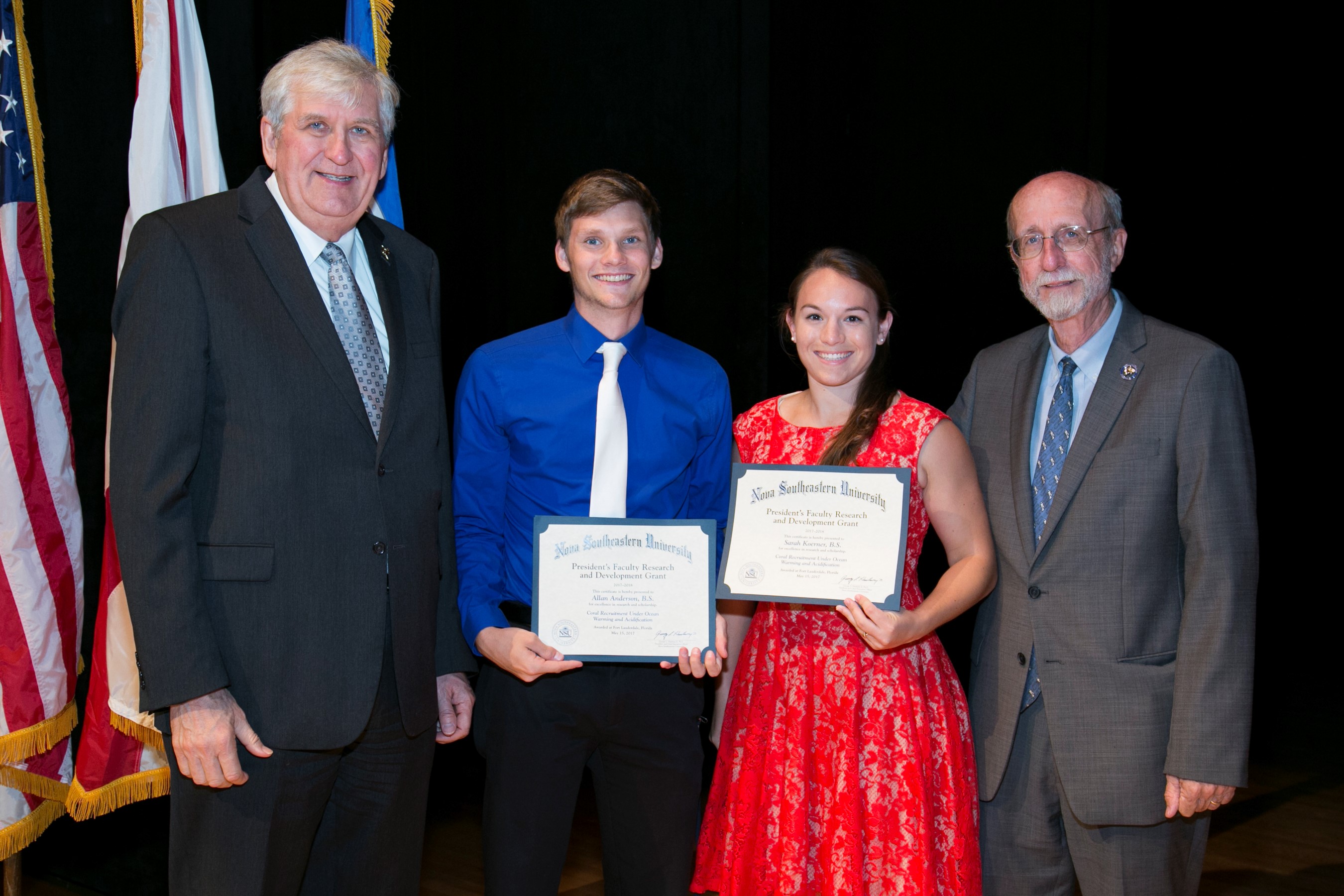Coral Recruitment under Ocean Warming and Acidification
Grant Winners
- Joana Figueiredo, Ph.D. – Halmos College of Oceanography and Natural Sciences
- Allan Anderson, B.S. – Halmos College of Oceanography and Natural Sciences
- Sarah Koerner, B.S. – Halmos College of Oceanography and Natural Sciences
Dean
- Richard Dodge, Ph.D. – Halmos College of Oceanography and Natural Sciences
Abstract

Corals are a keystone species in reefs, however, their persistence is threatened by climate change. To accurately predict if corals will persist through climate change, we need to determine how natural mechanisms of population replenishment will be affected by increased temperatures and decreased pH. Thus, aside from assessing the direct impacts of warming and acidification on adults, larvae and juveniles, we also need to determine how a change in habitat quality (settlement cues) will affect coral larva settlement behavior and post-settlement survival and growth. The main settlement cue for scleractinian corals is crustose coralline algae (CCA) and bacterial biofilms, which have been found to be negatively impacted by climate change. The effects of poor/sub-optimal settlement cues on coral settlement and post-settlement survival and growth have never been assessed. To understand the impacts of ocean warming and acidification on coral recruitment, we will quantitatively assess indirect and direct deferred cost of delayed settlement and sub-optimal settlement cues. We will: (1) Measure the impact of sub-optimal settlement cues (crustose coralline algae and bacterial biofilms exposed to warming and acidification) on coral larval settlement (timing and rate); (2) Assess the effect of delayed settlement on the size of coral recruits at the time of settlement, and post-settlement survival and growth; and (3) Assess the impact of poor quality habitats (CCA exposed to warming and acidification) on post-settlement survival and growth of coral recruits. To fulfill these goals, we will use a experimental design with treatments: (1) larvae that have just reached the competent stage (~3 days after fertilization) will be exposed to optimal settlement cues, crustose coralline algae (CCA) and bacterial biofilms; (2) larvae will be kept in absence of settlement cues until day 7 after fertilization (delayed settlement), and then exposed to optimal settlement cues, (3) larvae that have just reached the competent stage (~3 days after fertilization) will be exposed to sub-optimal settlement cues (CCA and bacterial biofilms kept in warm and acidified conditions), and (4) larvae will be kept in absence of settlement cues until day 7 after fertilization, and then be exposed to sub-optimal settlement cues. In all treatments, we will measure larval settlement success and post-settlement survival and growth for two months. We hypothesize that larvae exposed to sub-optimal settlement cues will delay settlement and display lower settlement rates and smaller sizes at the time of settlement than larvae exposed to good settlement cues. Additionally, we hypothesize that corals that settle on a poor-quality habitat (CCA exposed to warming and acidification) will display lower post-settlement survival and growth.